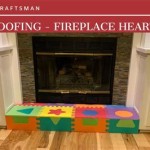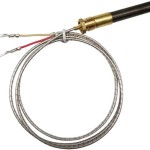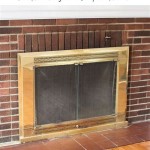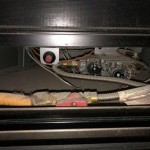Granite Fireplace Surround Thickness: A Comprehensive Guide
The selection of materials for a fireplace surround is a critical decision in home design, impacting both aesthetics and functionality. Granite, renowned for its durability, heat resistance, and natural beauty, is a popular choice. However, determining the appropriate thickness for a granite fireplace surround is paramount to ensuring safety, longevity, and visual appeal. The required thickness varies depending on several factors, including the size of the surround, the fireplace type (gas or wood-burning), and local building codes. This article provides a comprehensive overview of granite fireplace surround thickness, discussing relevant considerations to aid in making informed decisions.
Granite is an igneous rock formed deep within the earth's crust, composed primarily of quartz, feldspar, and mica. Its inherent strength and density make it an excellent material for high-traffic and high-heat environments, such as fireplace surrounds. In contrast to thinner, less durable materials, granite provides a robust barrier against heat and potential damage. Its non-porous nature, when properly sealed, also resists staining and makes it relatively easy to clean, contributing to its long-term maintenance ease. The natural variations in color and pattern within granite slabs offer a wide array of design options, allowing for customization to complement various interior styles.
Key Considerations for Granite Fireplace Surround Thickness
Several factors influence the ideal thickness of a granite fireplace surround. Understanding these factors is crucial to selecting the appropriate thickness to ensure both structural integrity and aesthetic harmony.
The size and dimensions of the fireplace surround are primary determinants. Larger surrounds necessitate greater thickness to maintain structural stability and prevent sagging or cracking. A larger granite slab spanning a significant area will be subject to greater stress, particularly from temperature fluctuations. Insufficient thickness could lead to warping or failure over time. Conversely, smaller surrounds, such as those used with electric fireplaces or smaller gas inserts, may require less thickness without compromising structural integrity. A careful assessment of the surround’s overall dimensions and the anticipated weight load is essential. The length and breadth of each individual piece of granite, along with the overall design complexity, must be considered.
The fireplace type and heat output are another critical element. Wood-burning fireplaces generate significantly more heat than gas or electric fireplaces. This intense heat can stress the granite, potentially causing thermal shock if the material is too thin or improperly installed. Gas fireplaces produce less direct heat; however, prolonged exposure to even moderate heat can affect thinner granite pieces. Electric fireplaces generally produce minimal direct heat, allowing for greater flexibility in material selection and thickness. When using granite with a wood-burning fireplace, a thicker slab is recommended to mitigate the risk of thermal shock and potential cracking. Ensuring adequate ventilation and following manufacturer guidelines for clearances around the firebox will also help minimize the thermal stress on the granite surround.
Local building codes and safety regulations often dictate minimum thickness requirements for fireplace surrounds. These codes are in place to ensure occupant safety and prevent fire hazards. Local municipalities may have specific regulations regarding the materials used in fireplace construction and their proximity to combustible materials. Before selecting the granite thickness, consulting with local building officials or a qualified contractor to understand all applicable codes is crucial. This proactive approach helps ensure compliance and avoids costly rework or potential safety issues down the line. Failure to adhere to building codes can result in fines and the requirement to remove and replace non-compliant materials.
Standard Granite Thicknesses for Fireplace Surrounds
Granite is typically available in several standard thicknesses, measured in inches or millimeters. The most common thicknesses encountered in fireplace surround applications are 3/4 inch (2cm), 1 1/4 inch (3cm), and 1 1/2 inch (4cm). While thicker options exist, they are less frequently used due to increased cost and weight considerations. The selection of the appropriate thickness often depends on the factors previously discussed, balancing structural needs with aesthetic preferences and budget constraints.
A 3/4-inch (2cm) granite slab is generally suitable for smaller fireplace surrounds, especially those surrounding gas or electric fireplaces with minimal heat output. It offers a cost-effective solution while still providing the durability and aesthetic appeal of granite. However, for larger surrounds or those exposed to significant heat, this thickness may be inadequate. Careful consideration should be given to the support structure behind the granite to prevent sagging or cracking over time. Using a robust adhesive and ensuring proper backing material will contribute to the longevity of a thinner granite surround. This thickness might also be acceptable for decorative elements above the mantle, where direct heat exposure is limited.
A 1 1/4-inch (3cm) granite slab is a popular and versatile choice for fireplace surrounds. It offers a good balance of strength, durability, and cost-effectiveness. This thickness is generally sufficient for most gas fireplaces and can also be used with some wood-burning fireplaces if properly installed and with adequate ventilation. The added thickness provides greater resistance to heat and stress compared to a 3/4-inch slab. It also allows for more elaborate edge profiles without compromising structural integrity. A 3cm granite surround offers a more substantial and luxurious appearance, enhancing the overall aesthetic of the fireplace. The ease of installation and availability of various colors and patterns make this thickness a widely favored option.
A 1 1/2-inch (4cm) granite slab is the thickest commonly used option for fireplace surrounds. It provides the highest level of durability and heat resistance, making it the preferred choice for wood-burning fireplaces or particularly large surrounds. The increased thickness offers exceptional strength and minimizes the risk of thermal shock or cracking. While more expensive and heavier than thinner options, a 4cm granite surround provides a premium look and feel. It is particularly well-suited for grand fireplaces or those serving as a focal point in a room. The additional thickness allows for more intricate detailing and elaborate edge profiles, further enhancing the aesthetic appeal. Due to its weight, proper support and installation are crucial to ensure long-term stability.
Installation Considerations and Support Structure
The proper installation of a granite fireplace surround is just as critical as selecting the appropriate thickness. A poorly installed surround, even with the correct thickness, can be prone to failure. The support structure behind the granite plays a vital role in distributing the weight and preventing sagging or cracking. Various installation techniques and materials are employed, depending on the specific design and construction of the fireplace. Ensuring a solid and stable base is essential for the longevity of the granite surround.
Before installing the granite, the existing fireplace structure must be thoroughly inspected to ensure it is level, plumb, and structurally sound. Any deficiencies, such as cracks or uneven surfaces, should be addressed before proceeding. The substrate to which the granite will be adhered should be clean, dry, and free of debris. Depending on the substrate material (e.g., brick, concrete, drywall), appropriate surface preparation techniques, such as sanding or priming, may be necessary. The substrate should also be capable of bearing the full weight of the granite surround without deflection or movement. Reinforcing the existing structure may be required in some cases, particularly for heavier granite slabs.
The choice of adhesive is crucial for ensuring proper adhesion between the granite and the substrate. High-quality epoxy-based adhesives or modified thin-set mortars specifically designed for use with stone are generally recommended. These adhesives provide a strong and durable bond that can withstand the stresses associated with temperature fluctuations. The adhesive should be applied evenly to both the back of the granite and the substrate, following the manufacturer's instructions. Using notched trowels to create ridges in the adhesive helps to ensure proper coverage and bond strength. The granite should be carefully positioned and pressed firmly against the substrate to ensure full contact with the adhesive. Temporary supports or shims may be necessary to hold the granite in place until the adhesive fully cures.
In some cases, mechanical fasteners, such as screws or anchors, may be used in conjunction with adhesive to provide additional support, especially for heavier granite slabs or complex designs. These fasteners should be strategically placed to distribute the weight evenly and prevent stress concentrations. Care should be taken to avoid damaging the granite during the installation process. Pre-drilling holes for the fasteners may be necessary to prevent cracking. The fasteners should be properly sized and selected to ensure they are compatible with both the granite and the substrate. Concealing the fasteners with color-matched fillers or grout can improve the aesthetic appearance of the finished surround.
Proper sealing of the granite is essential to protect it from staining and water damage. Granite is naturally porous, and unsealed granite is susceptible to absorbing liquids, which can lead to unsightly stains. A high-quality penetrating sealer should be applied to the granite surface after installation, following the manufacturer's instructions. The sealer should be allowed to fully cure before the fireplace is used. Regular cleaning with a mild detergent and water will help to maintain the appearance of the granite surround and prevent the buildup of dirt and grime. Harsh chemicals or abrasive cleaners should be avoided, as they can damage the sealed surface.

Natural Stone Granite Fireplace Hearth 18mm Thick Decoridea

Caledonia Granite Fireplace Surround Kit

The Top 3 Materials To Use For Hearths Fireplace Tips

Buy The Fireside Stonehenge Black Granite Fireplace From Direct Fireplaces

Fire Hearths

Fireside Oslo Black Granite Fireplace From Direct Fireplaces

Granite Hearths For Multi Fuel Stoves Cast Fireplaces

Black Galaxy Granite Fireplace Surround Kit

Dk Studio

Remodeling Your Home With Granite Marble Fireplace Surrounds
Related Posts








